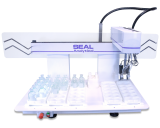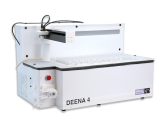Nitrate
Nitrate analysis is a vital component of water quality, agriculture, and regulatory compliance. SEAL Analytical's continuous flow and discrete analyzers enhance efficiency and accuracy with a variety of automated methods and reduction pathways. Ditch cadmium columns and granules for easily maintained cadmium coils, or other options like hydrazine sulfate, vanadium chloride, and enzymatic reduction.
Why is Nitrate Analysis Important?
Nitrate plays a crucial role in maintaining balanced ecosystems, optimizing crop production, and ensuring product quality across various industries. In environmental settings—such as water, wastewater, and coastal monitoring—nitrate levels indicate agricultural runoff or untreated effluents, both of which can trigger algal blooms and reduce dissolved oxygen, harming aquatic life. Regulatory bodies set strict nitrate limits in drinking water to safeguard public health, while continuous monitoring of nitrate in industrial discharge helps facilities comply with environmental standards and prevent pollution.
Beyond water analysis, nitrate measurement is central to agricultural soil and fertilizer management. By identifying actual nitrate availability in soils, farmers can apply fertilizers with precision, maximizing yields and minimizing runoff. This approach cuts costs, preserves natural resources, and reduces the risk of harmful algal blooms downstream. In plant tissue analysis, nitrate data guides decisions on nutrient uptake efficiency, enhancing crop quality and productivity.
In commercial processes—ranging from food and beverage to pharmaceuticals—nitrate testing helps maintain product safety, labeling accuracy, and consistent production quality. Facilities that generate nitrate-containing wastewater must also track and control these levels to remain compliant with regional regulations. SEAL Analytical’s proven expertise in automated nutrient testing methods supports these diverse applications, offering accurate, reliable solutions tailored to the needs of modern laboratories in environmental, agricultural, and industrial sectors.
As there is no direct colorimetric reaction for Nitrate analysis, the nitrate present in the sample must be chemically reduced to nitrite via a reduction pathway. The nitrate and nitrite concentration can then be measured using the Griess reaction - where the chemically-reduced sample is mixed with color reagent, prepared in dilute phosphoric acid. Original nitrite, plus nitrite from chemical reduction, reacts with sulfanilamide to form a diazonium compound. This species couples with N-(1-naphthyl)-ethylenediamine dihydrochloride (commonly called NEDD) to form a reddish-purple azo dye that is measured photometrically at 520 - 560 nm. Separate results for nitrite are obtained using the same reaction without the reduction step, and the nitrite concentration can then be subtracted from the Nitrate+Nitrite concentration to obtain the sample's nitrate concentration measurement.
What's the Automation Advantage?
| 1. Increased Throughput and Efficiency: By automating nitrate testing, labs can process a higher volume of samples more quickly, reducing the risk of human error and improving overall reproducibility. Automation also frees analysts from routine benchwork, enabling them to focus on more valuable tasks such as data interpretation, method development, or process optimization. | 2. Multi-Parameter Testing: Many continuous flow and discrete analyzers allow simultaneous analysis of nitrate alongside other nutrients (e.g., nitrite, phosphate) on the same platform. This consolidated approach cuts down on instrument downtime, simplifies lab operations, and supports broader nutrient analysis needs in one streamlined setup. | |
| 3. Enhanced Data Management and Accuracy: Built-in software features—like auto-insertion of quality controls, automated calibration, and comprehensive reporting—remove manual steps, helping labs maintain stringent quality controls. These functions yield reliable and reproducible results, essential for environmental, agricultural, and industrial decision-making. | 4. Lowest Detection Limits:Segmented flow analyzers in particular excel at achieving ultra-low detection levels, making them a strong choice for labs that require sensitive nitrate measurements. By integrating methods approved under various environmental and regulatory standards, these systems combine precision with the flexibility needed to adapt to diverse testing scenarios. |
SEAL's Expertise in Automated Nitrate Analysis
With over 60 years in the field, SEAL Analytical stands out for the experienced chemists, engineers, and leadership at the heart of our operation. Drawing on deep expertise in nutrient automation, our teams have continually refined analytical methods—shaped by the legacy of the AutoAnalyzer II used to develop many EPA methods and predecessor to our modern AutoAnalyzer systems. This blend of historical know-how and modern innovation positions us to meet demanding nitrate testing requirements across environmental, agricultural, and commercial applications.
Recognizing that no single method suits every laboratory, SEAL Analytical offers both discrete analyzers and continuous flow analyzers, empowering you to choose the system that aligns best with your workflow. Whether your testing needs involve cadmium reduction, hydrazine, vanadium (III) chloride, or an enzymatic reduction, our instruments seamlessly incorporate these pathways. By combining flexible methodologies with robust automation and global support, SEAL ensures laboratories can produce accurate, reproducible nitrate results while navigating today’s increasingly complex regulatory landscape.
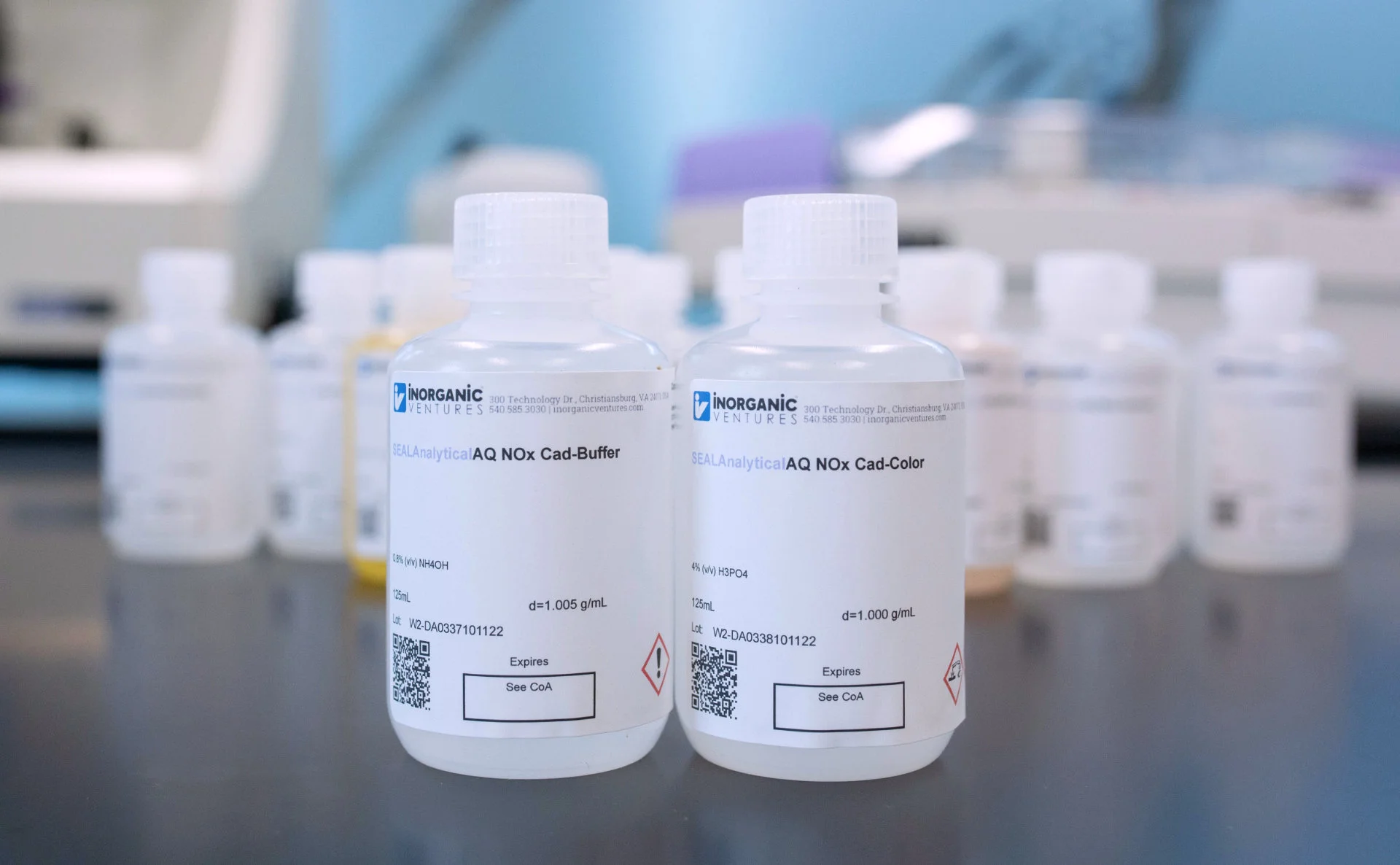
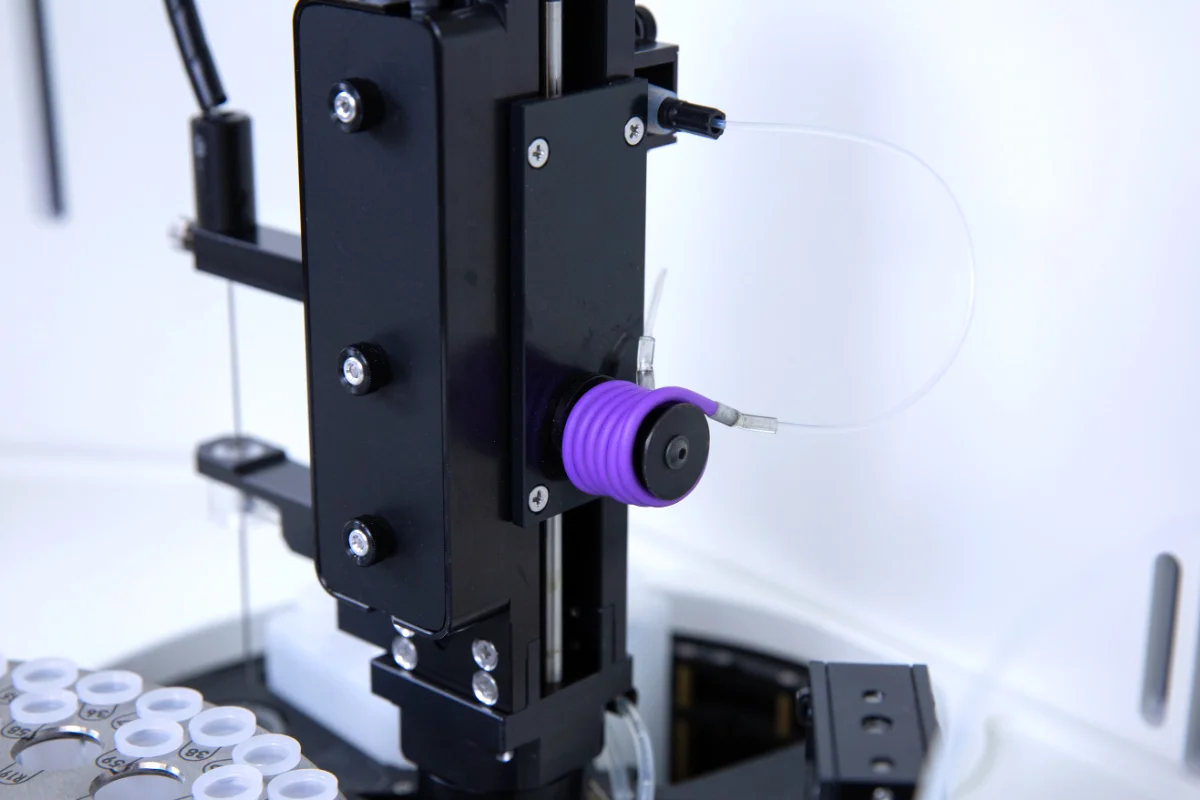
Additionally, SEAL Analytical offers Ready-to-Use Reagents made by Inorganic Ventures specifically for our EPA methods on SEAL discrete analyzers for Nitrate+Nitrite analysis using cadmium reduction or hydrazine reduction.
Both color reagent and buffers, as well as the hydrazine reduction reagent, are offered for SEAL methods EPA-114, EPA-126, EPA-127, and EPA-141, following EPA 353.2 or EPA 353.1
When every second counts, precision and reliability are paramount. Save time and complete your testing worry-free with pre-made, pre-tested reagents!
Key Nitrate Methods and Features
SEAL Analytical’s expertise in nitrate analysis covers a wide range of approved methods, providing unmatched support for environmental water testing, wastewater analysis, nutrient monitoring, and beyond. Our instrumentation automates methods according to 40 CFR 136, 40 CFR 141, and other regulatory guidelines. Common reference methods for SEAL's nitrate method library include:
- EPA 353.2
- Standard Methods 4500-NO3-F
- ISO 15923-1
- ISO 13395
- ISO 14255
- ISO 14256-2
- ISO 14673-2
- ISO 6777
Cadmium Reduction
- ISO 15923-1
- ISO 15517
- EPA 353.1
- Standard Methods 4500-NO3-H
- Coresta Method No. 36
Hydrazine Reduction
- Methods available, contact us for details
Vanadium (III) Chloride Reduction
- Methods available, contact us for details
Enzymatic Reduction
When it comes to choosing a nitrate reduction pathway, we provide you with all of the options. Our continuous flow analyzers and discrete analyzers are both well-equipped to streamline reduction via a cadmium coil. Similar in function to a cadmium column, an Open Tubular Cadmium Reductor (commonly called a cadmium coil) is a coiled tube made out of extruded cadmium metal and covered in a protective coating. The cadmium coil can be regenerated inline - and can be cleaned with water or hydrochloric acid for continued use - allowing for a long lasting, low maintenance approach to cadmium reduction. On both our continuous flow analyzers and discrete analyzers, the cadmium coil pathway is controlled by an automatic valve. This ensures sample only passes through the cadmium coil when reduction is needed, and protects the cadmium coil from any other substances. Our continuous flow analyzers are also compatible with traditional cadmium columns if preferred.
Beyond nitrate detection, SEAL Analytical’s discrete analyzer and continuous flow analyzer product lines support an array of automated processes, including dilution, auto-calibration, automatic QC insertion, and the sequential or simultaneous analysis of multiple parameters. By combining these powerful features with regulatory-approved methods, SEAL Analytical ensures your lab’s nitrate analysis is not only compliant and efficient, but also capable of delivering consistent, precise, and high-quality results.
Compare our Analyzers
Explore the capabilities of each of our product lines below. Our analyzers and robotic systems are capable of analyzing a wide variety of analytes on a single platform. Select a product line to learn more about the capabilities of each system.
Ready to Optimize Your Nitrate Analysis?
Request Information
Fill out the form below to request information about our products and services.

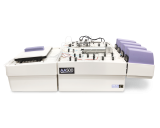
.png?resolution=160x128&quality=95)
